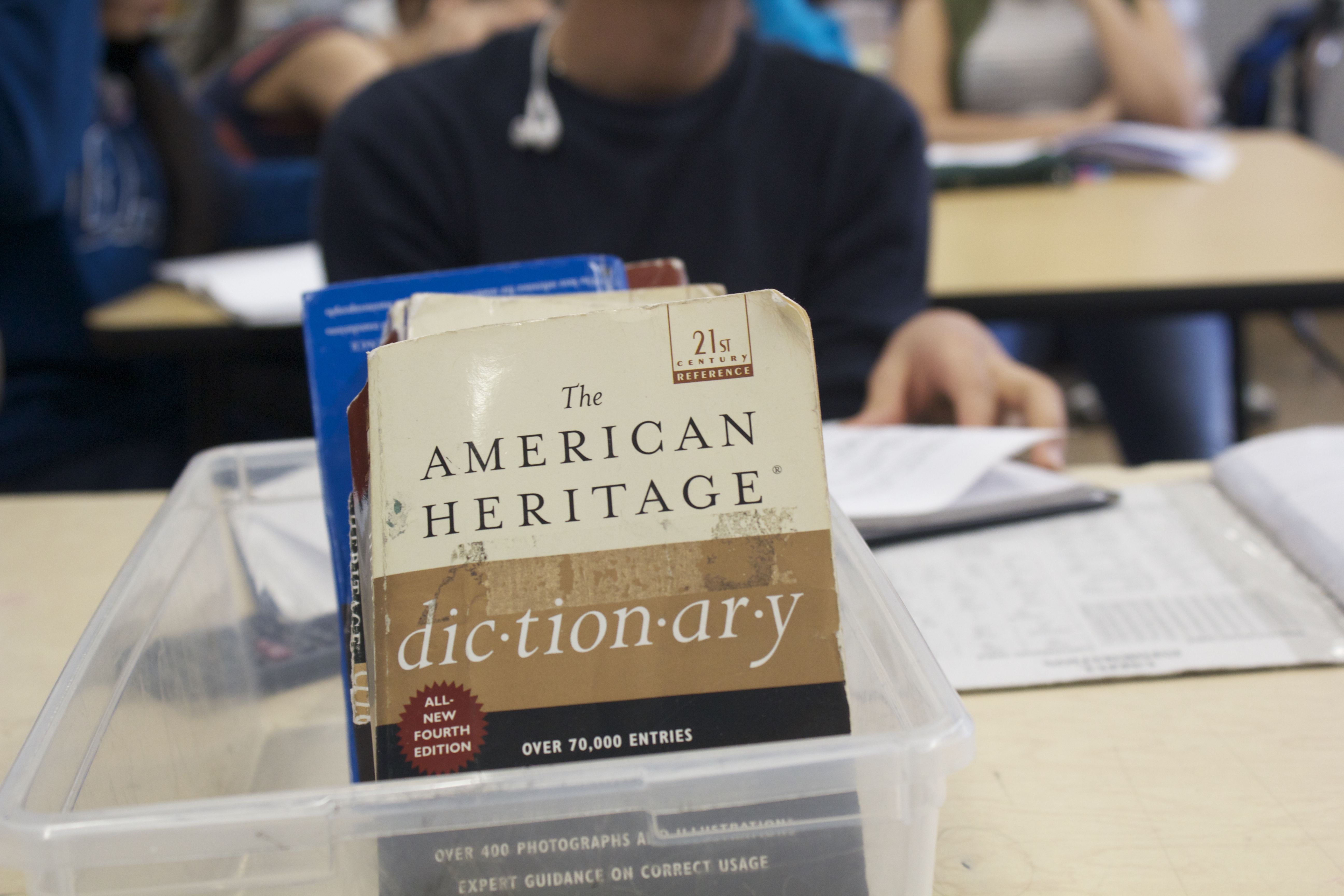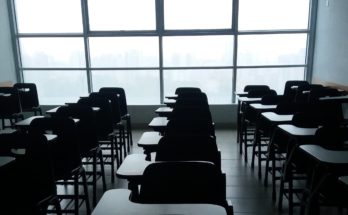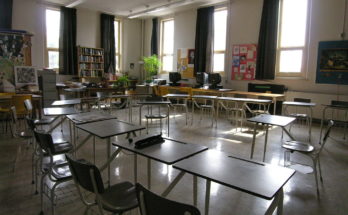
For a few minutes on a Monday morning in February, teacher Shohel Rahman remained the only person speaking English in the 9th and 10th grade math class at International Community High School in the South Bronx.
Students in Rahman’s Algebra class were free to chat in French and Spanish as they worked through a worksheet on how to design logos with the help of linear functions.
By 9:40 a.m., two 9th graders from the Dominican Republic got into a heated discussion in Spanish about how they should be plotting their graphs. Cesarina Checo, 15, meticulously calculated the function for 30 variables, but Carlos Lopez, 16, thought he found a shortcut by skipping a few numbers.
“Uno, dos, tres, cuatro, cinco … treinta?” Cesarina asked, with her eyebrows raised.
Rahman — who grew up in Bangladesh and immigrated to the U.S. ten years ago to work as a teacher — smiled when he noticed the argument and swung by their table. He didn’t tell Carlos he was wrong or give Cesarina the satisfaction of being right. Instead, he urged Carlos to try to plot a graph with those variables and see if it worked. Cesarina smiled and turned back to her worksheet.
“Carlos was not following the sequence. But sometimes learning from your peers can help more than learning from the teacher,” Rahman said later. “It makes misconceptions more clear when you can argue with your peers.”

The freshmen and sophomores in Rahman’s class in the Bronx come from Mexico, The Dominican Republic, Honduras, Haiti, Senegal and Guinea. Like all students at International Community High School, the school restricts admission to brand new immigrant teenagers who have been in the United States for four years or less. Many arrive in the U.S. with next to no English, and interrupted formal education in their home countries.
The school, founded in 2006, serves 470 students from around two dozen countries. Ninety percent of students are living in poverty, according to New York City Department of Education data. The school joined the International Network for Public Schools, a nonprofit organization that supports 22 public high schools in in New York City, San Francisco and Washington D.C. by offering teacher training and sharing best practices on how to support immigrant youth.
All schools in the network cater to new immigrants who score poorly on English language exams. These schools operate on the premise that immigrant teenagers from all backgrounds can be best served in one school where teachers are sensitive to their language and emotional needs. Rather than separating students in classrooms dedicated to teaching them English as a second language, public schools in the network infuse language learning into every subject.
Teachers like Rahman are encouraged to clarify math concepts and improve literacy while facilitating discussions in students’ native language. The solution? Rahman has divided his classroom into six tables according to students’ native language and country of origin. Spanish speakers from the Dominican Republic and Mexico occupy most of the tables while French speakers from Senegal and Haiti sit next to each other.
What looks a lot like segregated pockets in a classroom is in fact designed to help students learn in their native language by relying on their friends and peers as translators. Rahman assigns a relatively advanced student — like Cesarina — to each table to help his or her peers with language and math.
Liliana Vargas, the Director of School Development at the International Network for Public Schools, said that creating purposeful groups in the classroom can be one way to leverage students’ native language to dig deeper into content.
“It forces students to take ownership of their learning and have each other as support,” Vargas said. “ A student really understands and has truly learned the content when they are able to explain it.”

However, it’s uncertain how innovations like switching up the seating chart in math class will translate to gains in academic achievement and raising graduation rates for low-income immigrant youth. Rahman’s classroom may also have a vastly different impact on struggling students and those like Cesarina, who are relatively advanced in Math and English. The 4-year graduation rate at International Community High School has significantly improved in one year, from 39 percent in 2014 to 57 percent in 2015. However, it remains lower than the city average of around 70 percent. Teachers have tried to focus on improving the 6-year graduation rate.
Last year, International Community High School joined a another citywide consortium of schools that emphasize portfolio-based assessments over state tests. It won a waiver from the New York State Board of Regents in Albany to opt out of all high school exit exams except for the English Language Arts exams for 11th and 12th graders. Advocates of portfolio-based assessments that combine reading, writing and presentation skills are better at showing students’ improvement over time and can help them prepare for college.
To prepare students for portfolio-based assessments, Rahman guides his students to write essays about mathematical concepts, which they present to teachers and outside evaluators as part of their graduation requirements.
Rahman continues to follow the common core curriculum, which is moving towards incorporating literacy into all subjects. His classroom represents a real example of tackling language through mathematics.
The emphasis on literacy in math is one more thing that students from Latin America have to adjust to.
“In the Dominican Republic, two plus two equals four,” said 15-year-old Lia Garot, a sophomore from the Dominican Republic, as she sketched the math problem in her notebook. “Here, you have to explain why it’s four.”
Lia, who arrived in the United States three years ago when she was 12 years old, sat at a table with Cesarina, Carlos and Treisy — all of whom are from the Dominican Republic. Lia barely spoke English when she arrived in the U.S. and attended a bilingual middle school where teachers offered help in Spanish.
In Rahman’s classroom, Lia relies on her friends like Cesarina for her help.
Although Rahman does not speak Spanish or French, he has learned how to figure out if students are chatting about math or something else in his classroom. Since he started teaching at International Community High School in 2006, he has learned how to say most math terms and numbers in Spanish. But his method is not foolproof.
Rahman has sometimes caught himself scolding students for speaking in Spanish when they were in fact discussing a math problem.
“Oh my gosh, I felt really guilty and I said sorry to them,” he said. “I have no problem apologizing to my students. I am a person who will apologize right away.”



